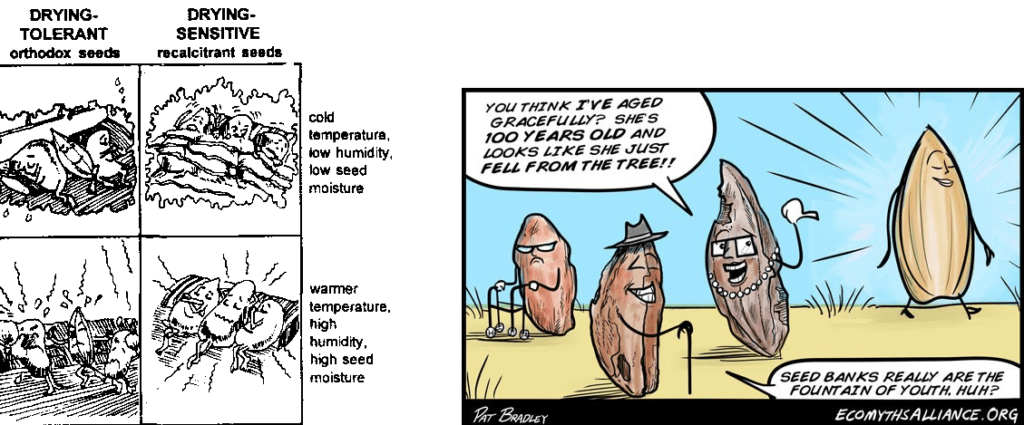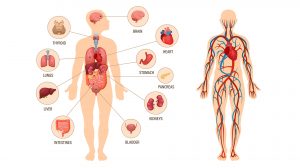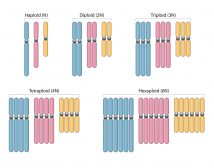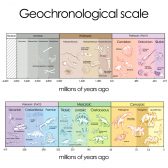
Recalcitrant
adj./ n.
[ɹɪ.ˈkæl.sɪ.tɹənt]
Definition: a distinguished ability to resist change in some property
Table of Contents
Several words of the English language find wide usage in subjects as diverse as literature, science, social science, environmental science, and soil science to humanity. Let’s focus on one such word — “recalcitrant”. Since we mainly deal with recalcitrant meaning in biology, we’ll provide only a brief description of the term in a general sense.
Recalcitrant Definition
What does recalcitrant mean in biology? The word recalcitrant finds vivid and wide usage in different fields of biology. When asked to define recalcitrant, one can define it as a distinguished ability to resist change in some property.
It is used in plant seed biology for describing certain types of seeds. It is used in plant tissue cultures to define the nature of some plant cells or tissues to be unresponsive to tissue culture procedures. It is used in soil science and biogeochemistry to describe the material property of organic matter to resist decomposition. It is used in biotechnological biofuel production to describe the resistance of biomass towards enzymatic hydrolysis.
Let’s learn more about each of them in this piece.
Recalcitrant General Meaning
Recalcitrant is a word generally used to define a state of stubborn resistance or non-governance under a defined set of rules. It is typically used to define a person who is uncooperative, non-compliant, and has a habit of obstinately and boldly resisting authority. A recalcitrant child, recalcitrant members of a family, recalcitrant health care system, recalcitrant demonstrators, or a recalcitrant person is an adamant one who doesn’t obey authority. Some of the recalcitrant synonyms are uncooperative, rebellious, intractable, etc.
Recalcitrant Etymology
Recalcitrant (adjective) is an English word with its root in French and Latin language. It has been derived from the French word “recalcitrant”, which has been derived from two Latin words “recalcitrans” and “recalcitrantis”. These two words have their root further in older Latin verbs (present participle form) “recalcitro” and “recalcitrare”, which means ‘to kick with the heels’.
Watch this vid about the term “recalcitrant”:
Being recalcitrant is defined as a distinguished ability to resist change in some property. The term is used to describe the inability of a seed to germinate in plant seed biology or the inability of a plant cell or tissue to respond to tissue culture manipulation in plant tissue cultures. It is also used to determine the material property of organic matter to resist decomposition in soil science and biogeochemistry and the resistance property of biomass towards enzymatic hydrolysis in biotechnological biofuel production.
FAQ
Let’s look at the commonly associated terminologies to recalcitrant terms.
What is a recalcitrant example?
There are several fields of Biology in which terminologies like recalcitrant or recalcitrance are used. Let’s discuss them here.
Recalcitrant Seed
There are 2 types of seeds on the basis of the ability to retain viability and survivability post-desiccation:
(1) Recalcitrant seeds
(2) Orthodox seeds
Recalcitrant seeds are unable to thrive in a frozen or desiccated state for longer durations. This nature of recalcitrance makes their ex-situ conservation relatively very difficult to orthodox seeds.

There are different stages of seed maturation. The last phase of seed maturation is “maturation drying”. This is a normal step in the case of orthodox seeds but not in recalcitrant seeds. Both of these terms were coined by Roberts in 1973. There is no clear-cut boundary that defines seed as recalcitrant or not.
According to a long-term study by Farrant, Pammenter, and Berjak, there is a continuum of the types of recalcitrant seeds. They proposed three categories to objectively look at this phenomenon.
- Category I (FAIRLY LESS RECALCITRANT): Tolerance for a fair amount of desiccation and freezing conditions. These plant species are found in temperate to subtropical regions.
- Category II (MODERATELY RECALCITRANT): Tolerance for an intermediate degree of desiccation and mid-range temperature conditions. These plant species are found in tropical regions.
- Category III (HIGHLY RECALCITRANT): Tolerance for only minimal amount of desiccation and highly temperature-sensitive. These plant species are found in tropical to wetland regions.

Look at the table below to note the differences between orthodox and recalcitrant types of seeds.
Table: Differences between orthodox and recalcitrant seeds. | ||
|---|---|---|
| Feature | Orthodox Seeds | Recalcitrant Seeds |
| Tolerate post-shedding desiccation | Yes | No (only maximally up to 3-4 days) |
| Undergo the last phase of seed maturation i.e., “maturation drying” | Yes | No |
| Chill-sensitive | Yes | No (most often) |
| Oxidative damage upon desiccation | No | Yes |
| Deterioration of cell constituents upon desiccation | No | Yes |
| Ease for ex-situ conservation | Easy | Difficult |
| Lifespan | Longer than recalcitrant seeds | Shorter than orthodox seeds |
| Size | Relatively smaller in size | Relatively larger in size |
| Common occurrence | In pioneer plant’s species of tropical areas | In climax plant’s species of tropical areas |
| Examples | Cereal seeds (wheat, barley, rice), pulses seeds (gram, beans, pigeon pea), guava, dates, capsicum | Usually the larger seeds like mango seeds, lychee seeds, jackfruit seeds |
Data Source: Akanksha Saxena of Biology Online.



Recalcitrant Plant Tissue Cultures
Recalcitrant plant tissue in ‘in vitro cultures’ is the inability of certain plant cells, tissues, or organs to elicit any response to the applied tissue culture manipulations. It restricts and limits the biotechnological exploitation as the plant tissue fails to respond in terms of growth, regeneration, etc. Three main factors are being studied to develop a clear understanding of the plausible causes of this recalcitrance. They are as follows:
- Plant’s physiology (explant choice/selection, plant health, environment, life cycle)
- In vitro manipulations (techniques applied, media selection, entails culture environment too)
- Stress physiology post-culture (embodies both positive and negative effects)

Recalcitrant Soil Organic Matter
The term recalcitrant is also used in soil science and biogeochemistry to describe the organic matter of soil that’s intrinsically resistant to the microbial decomposition process. Recalcitrant organic matter is also sometimes called molecular recalcitrance or intrinsic chemical recalcitrance or refractory organic matter.

Recalcitrant Biomass in Biofuel Production
This term is also used in biotechnological biofuel production to describe the resistance of biomass towards enzymatic hydrolysis. This property is endowed upon by the ‘lignocellulosic content’ as it’s highly resistant to enzymatic degradation. This is because of the rigid, compact structure of the plant cell wall. The chemical composition is majorly lignin and hemicellulose.
The structure and the spatial network of the biomass further determine the extent of recalcitrance (cellulose crystallinity plus the degree of polymerization).
There are several factors that affect the reachability and accessibility of biomass lignin and cellulose to be degraded. Some of them are:
- Direct factors (accessible surface area)
- Indirect factors (biomass structure, pore size, particle size, specific surface area)

Recalcitrant Compounds
Fungi are well-known to grow luxuriantly in the presence of recalcitrant media and compounds. This ability of fungi is exploited for their usage in bioremediation processes. Both saprophytic and symbiotic fungal species possess this distinguished ability to feed on and degrade N-containing recalcitrant compounds present in wastewater. The release of extracellular enzymes by these ligninolytic fungi mediates the process of recalcitrant compound breakdown.

Preserving Recalcitrant Seeds by the “Cryopreservation Method”
Bio-conservation efforts have ramped up since the severe detrimental effects of global warming and human invasion into preserved ecosystems started showing up in the past 20-30 years. One of the many types of floral conservation efforts is seed banking.
This is an ex-situ effort in which seeds of threatened and critically threatened plant species are conserved outside their natural habitats. As we now know that seeds are of two types — orthodox and recalcitrant, not both types survive the desiccation process. Recalcitrant seeds of threatened and critically threatened (IUCN Red-listed or CITES-listed) plant species don’t thrive in the drying phase.
According to a study report by scientists from the Royal Botanic Gardens in Kew in 2018, seed banking is a futile effort toward the conservation of threatened species with recalcitrant seeds (Wyse et al., 2018).
Emphasis was laid to maximize the search for better conservation methods for such seed types. Research underpinning exploration and optimization of the ‘cryopreservation technique’ for such seed types could be an answer to this problem.
Cryopreservation is a method of preserving seeds, embryos, and other plant tissues in liquid nitrogen rather than directly freezing them. It has been tried and proved successful for orthodox seed types with shorter storage durations. Cryopreservation increased the viability durations in those cases.
Post-2020, the Global Strategy for Plant Conservation (GSPC) instructs to put in concerted efforts at exploring this technique intensively for recalcitrant seeds. They see immense potential in this technique to conserve genetic diversity, threatened and critically threatened plant species of tropical moist forests, and mangroves of wetlands that are typically recalcitrant in nature!


Answer the quiz below to check what you have learned so far about the term “recalcitrant”.
References
- Berjak, P., Farrant, J.M., Pammenter, N.W. (1989). The Basis of Recalcitrant Seed Behaviour. In: Taylorson, R.B. (eds) Recent Advances in the Development and Germination of Seeds. NATO ASI Series, vol 187. Springer, Boston, MA. https://doi.org/10.1007/978-1-4613-0617-7_8
- Berjak, P., & Pammenter, N. W. (2008). From Avicennia to Zizania: seed recalcitrance in perspective. Annals of Botany, 101(2), 213–228. https://doi.org/10.1093/aob/mcm168
- Benson, E. E. (2000). In vitro Plant Recalcitrance: An Introduction. In Vitro Cellular & Developmental Biology. Plant, 36(3), 141–148. http://www.jstor.org/stable/4293329
- Sarah V. Wyse, John B. Dickie, Katherine J. Willis. Seed banking not an option for many threatened plants. Nature Plants, 2018; 4 (11): 848 DOI: 10.1038/s41477-018-0298-3
- Farrant, J.M., Pammenter, N.W. and Berjak, P. (1988a), Recalcitrance – a current assessment, Seed Sci. & Technol., 16:155.
- Farrant, J.M., Pammenter, N.W. and Berjak, P. (1988b), Development of the recalcitrant seeds of Avicennia marina, Proc. Electron Microsc. Soc. South. Afr., 18:109.
- Benson, E.E. Sepecial symposium: In vitro plant recalcitrance in vitro plant recalcitrance: An introduction. In Vitro Cell.Dev.Biol.-Plant 36, 141–148 (2000). https://doi.org/10.1007/s11627-000-0029-z
- Kleber M. (2010). What is recalcitrant soil organic matter? Environ. Chem. 2010, 7, 320–332. doi:10.1071/EN10006
- Zoghlami, A., & Paës, G. (2019). Lignocellulosic Biomass: Understanding Recalcitrance and Predicting Hydrolysis. Frontiers in chemistry, 7, 874. https://doi.org/10.3389/fchem.2019.00874
©BiologyOnline.com. Content provided and moderated by Biology Online Editors.








